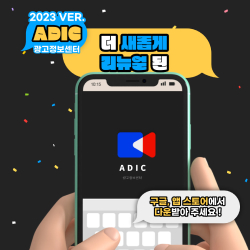광고 메시지 제작 방식과 소비자의 설득 지식이 소셜 미디어 네이티브 광고에 대한 소비자 반응에 미치는 영향
자료요약
Guided by the persuasion knowledge model (PKM), this research investigates how the message executional style (informational vs. narrative) of native ads, in conjunction with consumer’s dispositional persuasion knowledge (high vs. low), influences consumer responses towards native advertising on social media. Based on the experimental study results, it was found that consumers with high persuasion knowledge (PK) perceived informational message as less manipulative than narrative message. Furthermore, these consumers demonstrated a higher intention to share the informational messages as well. However, the study did not find a significant difference between informational and narrative messages among consumers with low PK in terms of perceptions of manipulativeness and intention to share. Additionally, the perceived manipulativeness of the advertisements acted as a mediator in the relationship between message execution style and intention to share for consumers with high PK. The theoretical and practical implications were discussed.
소셜 미디어 상에서 네이티브 광고가 활발하게 집행되고 있으나, 네이티브 광고 고유의 특성으로인 해 기만성에 대한 우려 또한 존재하는 것이 현실이다. 네이티브 광고의 본질을 이해하는 소비자 개인적 특성으로서의 설득지식의 역할이 중요함에도 불구하고, 기존 네이티브 광고 연구에서 개인적 특성 으로서의 설득지식의 역할이 간과되고 있다. 이에 본 연구는 설득지식모델을 활용하여 소셜 미디어 네이 티브 광고 메시지 제작 유형(정보형, 네러티브형)이 소비자의 반응에 미치는 영향이 소비자의 개인적 특성 으로서의 설득 지식 정도에 따라 달라지는지 살펴보았다. 실험 연구 결과, 설득지식의 수준이 높은 소비자 는 네러티브형 광고보다 정보형 광고를 덜 조작적으로 인식했고, 그에 따라 광고를 공유하고자 하는 의도 도 높았다. 반면, 설득 지식이 낮은 소비자의 경우, 광고 메시지 유형 간 반응 차이가 없는 것으로 나타났 다. 또한, 연구 결과 네이티브 광고에 대한 조작성 인식이 광고 메시지 제작 유형과 설득 지식 간 상호작 용 효과를 설명하는 기제로 나타났다. 본 연구 마지막 장에 네이티브 광고와 관련된 이론적, 실무적 함의 에 대해 제시하였다.
소셜 미디어 상에서 네이티브 광고가 활발하게 집행되고 있으나, 네이티브 광고 고유의 특성으로인 해 기만성에 대한 우려 또한 존재하는 것이 현실이다. 네이티브 광고의 본질을 이해하는 소비자 개인적 특성으로서의 설득지식의 역할이 중요함에도 불구하고, 기존 네이티브 광고 연구에서 개인적 특성 으로서의 설득지식의 역할이 간과되고 있다. 이에 본 연구는 설득지식모델을 활용하여 소셜 미디어 네이 티브 광고 메시지 제작 유형(정보형, 네러티브형)이 소비자의 반응에 미치는 영향이 소비자의 개인적 특성 으로서의 설득 지식 정도에 따라 달라지는지 살펴보았다. 실험 연구 결과, 설득지식의 수준이 높은 소비자 는 네러티브형 광고보다 정보형 광고를 덜 조작적으로 인식했고, 그에 따라 광고를 공유하고자 하는 의도 도 높았다. 반면, 설득 지식이 낮은 소비자의 경우, 광고 메시지 유형 간 반응 차이가 없는 것으로 나타났 다. 또한, 연구 결과 네이티브 광고에 대한 조작성 인식이 광고 메시지 제작 유형과 설득 지식 간 상호작 용 효과를 설명하는 기제로 나타났다. 본 연구 마지막 장에 네이티브 광고와 관련된 이론적, 실무적 함의 에 대해 제시하였다.
목차
Abstract
1. Introduction
2. Literature review
1) Persuasion knowledge model (PKM)
2) Two-way interaction of message execution style and persuasion knowledge
3) Mediating role of perceived manipulativeness
3. Method
1) Participants and procedures
2) Stimulus development
3) Measures
4. Results
1) Assumption testing
2) Manipulation check
3) Hypothesis testing
5. Discussion
1) Summary of findings and implications
2) Limitations and suggestions for future research
참고문헌
Appendix
요약
1. Introduction
2. Literature review
1) Persuasion knowledge model (PKM)
2) Two-way interaction of message execution style and persuasion knowledge
3) Mediating role of perceived manipulativeness
3. Method
1) Participants and procedures
2) Stimulus development
3) Measures
4. Results
1) Assumption testing
2) Manipulation check
3) Hypothesis testing
5. Discussion
1) Summary of findings and implications
2) Limitations and suggestions for future research
참고문헌
Appendix
요약











